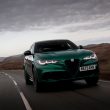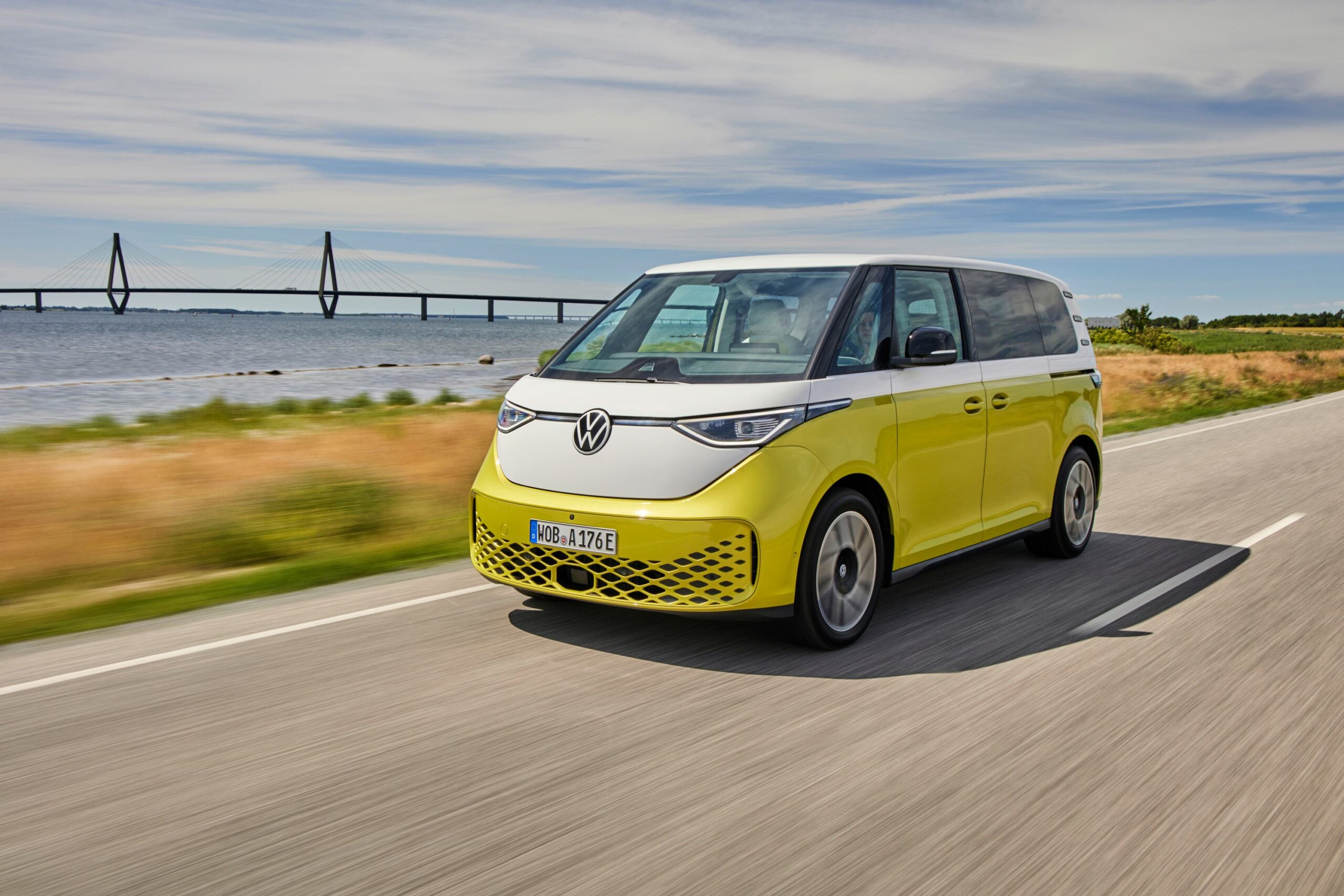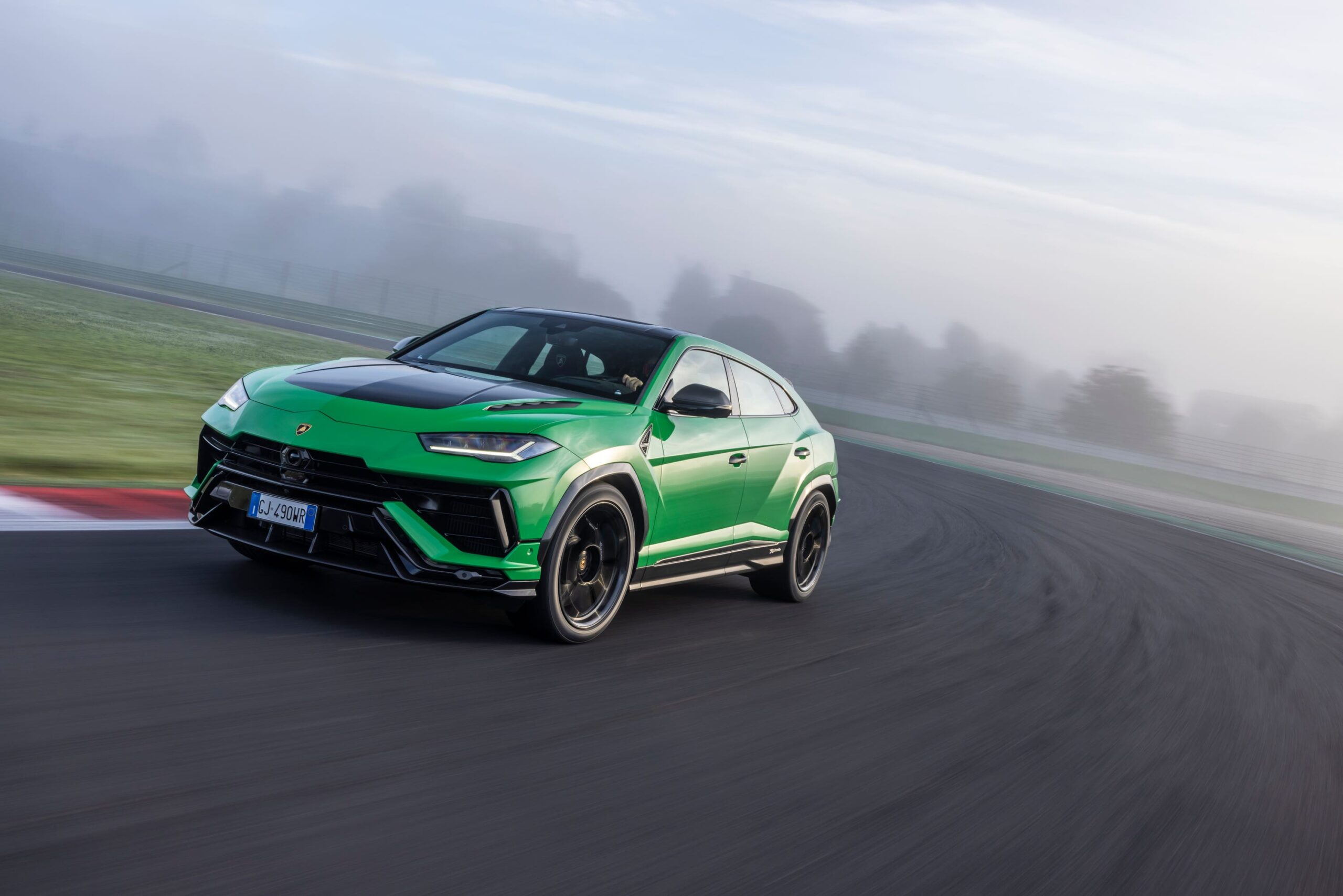The new ID Buzz aims to capture some of the original VW ‘Bus’ sparkle. Jon Reay has been out to Copenhagen to see if it achieves this.
It wouldn’t be an exaggeration to call this Volkswagen’s most important new car – even if it is technically a van.
It’s taken over two decades to materialise, but finally, fans of the original ‘VW Bus’ can go out and buy a reimagined, 21st-century version.
And very 21st century it is too. This is no rehashed T5 Transporter van with a two-tone paint job, but a new, fully-electric model based on Volkswagen’s MEB architecture – the very same platform that sits beneath the ID 3, Audi Q4, Skoda Enyaq and so on.

In short, everything. This is Volkswagen’s first proper stab at an electric van (after a brief flirtation with the disappointing ABT e-Transporter) and it’s not messing around.
In fact, part of the long gestation period for the ID Buzz has been spent waiting for the right technology to come along. To properly recreate the blunt nose of the original 1950s bus, VW says it wasn’t feasible to use petrol or diesel power – putting a big combustion engine at the back wouldn’t be practical for a van these days.
Literally speaking, just the washer bottle in under the bonnet – like other electric VWs, you’ll need to go digging around under the boot floor to find what’s powering the ID Buzz.

It’s rear-wheel-drive only, for now, borrowing a 201bhp electric motor from the ID 4 Pro Performance, though we wouldn’t be surprised if an all-wheel-drive version is in the pipeline.
The 77kWh battery is, too, borrowed from the ID 4 – meaning a quoted range of around 258 miles, and the ability to rapid recharge at up to 170kW.
Naturally, you don’t get quite the same turn of pace as you do in VW’s smaller EVs – 0-60 takes around 10 seconds against the ID 4’s 8.5 seconds, for example – but really, who cares? Far more importantly, the motor’s instantly-available 310Nm of torque means things feel much quicker than they ought to, even when fully loaded with people and luggage.

Volkswagen’s van range often gets described as feeling quite car-like compared to rivals, but the ID Buzz takes this to a whole other level.
Compared to things like the (recently discontinued) Caravelle, driving the ID Buzz feels like you’ve jumped forward not by a generation, but a whole century.
Firstly, there’s the refinement. The ID Buzz gets a helping hand from not having noisy petrol or diesel engines under the bonnet, of course, but things go much further than that. Road noise is well suppressed, and while there’s the inevitable bit of wind noise that comes from being shaped like a two-meter-wide wholemeal loaf, all things considered, it’s not that intrusive.
What’s most surprising is the Buzz’s inherent feeling of solidity. There’s none of the unsettling flex, rattles or shaking that you’d find in most van-based cars like the Mercedes V-Class. It feels – unsurprisingly – like a heavier, taller version of an ID 4 or Skoda Enyaq.

It even handles much better than it has any right to. Our route around the exceedingly straight roads of Copenhagen didn’t reveal much about the Buzz’s sporting pretensions, but thanks to a typically-EV low centre of gravity, it can change direction far more vigorously than you’re ever likely to ask it to.
The overriding feeling from driving the ID Buzz is one of absolute ease; relaxation even. Dimensions aside, it’s an effortless thing to cruise around in, with pleasantly light steering, well-judged controls, and a surprisingly compact turning circle of 11 metres (the same as a Golf).
This is a car that could sell on looks alone. To our eyes, VW has done a great job of reimagining its iconic people mover for the 21st century and has skilfully sidestepped spitting out a retro-looking pastiche.
There’s obviously a bit of the original van’s DNA in there somewhere, but you won’t find any 1950s throwbacks like cutesy circular headlights or lashings of chrome here. VW has given in and added a few two-tone paint options which, we have to admit, suit it very well.
Opt for the ‘seat styling package’ and you’ll get a lively interior to match the Buzz’s exterior. In addition to white interior plastics and fabric, there’s the choice of yellow, green, orange or navy blue accents to jazz up the seats, dash and doors.
The one thing the Buzz majors on is interior space. Front and back seat occupants get acres of head and leg room to play with – even if everyone on board is of basketball player proportions.
Boot space is also excellent, with a typical van-like square opening, and clever under-floor storage to help make use of the cavernous space. However, there are no individual captains chairs as in the old Caravelle or Multivan, and of the three rear seats, only two have ISOFIX mountings – a strange omission on a family-focussed car like this.
There’s no seven seat option yet either – VW says this will arrive only when a longer wheelbase version materialises.
There are only two trim levels – Life and Style – and even the cheapest option isn’t exactly spartan. As standard, there’s VW’s ubiquitous 10-inch infotainment screen, another ‘digital cockpit’ display in front of the driver, Android Auto, Apple CarPlay, wireless phone charging, along with heated seats, steering wheel and windscreen.

Style models get, as the name suggests, a few choice design upgrades: namely the multi-coloured interior pack, some more sophisticated headlights, and of course bigger alloys.
For many, the ID Buzz is the car they’ve been waiting decades for VW to produce. A fun-yet-practical reinterpretation of what is perhaps the firm’s best loved model. In our view, they won’t be disappointed either: it’s great to drive, perhaps even better to be a passenger in, and injects some real fun into what could otherwise have been a square, uninspiring MPV.
It’s not cheap though, with a hefty price premium over other electric VWs. We’d also like to have seen a bit more interior wizardry, as in the Multivan: a simple rear bench seat feels like a missed opportunity, frankly.
Those blemishes aside though, the ID Buzz is a likeable, well-thought-out bit of design that’s not only a worthy successor to the original VW Bus, but a great electric van and people carrier in its own right.











